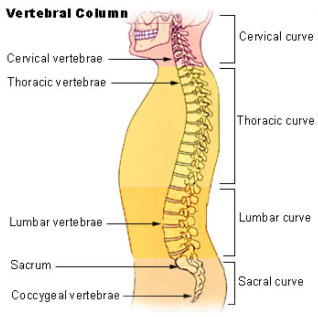SPINAL MOBILITY AND STABILITY, AND WHAT IS PILATES?

The balance between the mobility and stability of the vertebral column is of immense importance to a healthy back. While the column must be mobile, it also requires a good support structure to stabilise it in the correct posture. There is a passive system - vertebrae, ligaments and capsules, and an active system - muscles. These two systems affect both mobility and stability of the vertebral column. Regular but moderate movement is extremely important to keep the vertebral column in good working condition. A mobile vertebral column means; one in which one can move each level to its full potential.
Thoracic vertebrae are less mobile than cervical and lumbars. Certain sports e.g. gymnasts, ballet dancers; men and women may be over mobile (hyper-mobile). The active system may become strained from overuse and fail to support the joints sufficiently. The opposite, hypo-mobile joints will mean limited movement of the joints causing stiffness of the passive system and surrounding structures. These areas usually develop in people who allow their vertebral columns to remain in incorrect postural position for long periods of time, e.g. office workers.

Too little mobility can be improved by manual therapy such as Osteopathy in conjunction with the correct exercise regime. Too much mobility can be protected by learning to use your stabilising muscles.
The most important stabilising muscles, the Transversus Abdominis and Multifidus will allow certain areas of your vertebral column to move too much. Correctly contracted core muscles, prevent unnecessary movement in the vertebral column especially the low back, while arms and legs remain mobile.
PILATES
Pilates is a "mind-body" conditioning exercise programme that targets the muscles stabilising the trunk. The method was the brainchild of Joseph Pilates. Born in Germany in 1880, He was rather a sickly child, but by the age of 14 he had overcome his illnesses and chose to dedicate his life to physical fitness. He studied a variety of techniques from gymnastics, meditation, martial arts and yoga. These were the inspiration for his method that he called "contrology". After the First World War, he immigrated to US and opened the first Pilates studio in New York City. It gained an almost cult like status amongst Dancers and other performing artists. Following a great deal of research to understand the science behind the art, the Pilates method has now become a mainstream form of exercise used by doctors, osteopaths and physiotherapists all over the world. Pilates first described 34 mat based exercise, although he also introduce moving equipment that worked on a pulley and spring principle to aid beginners with some of the more difficult exercises. Ideally a Pilate's instructor will combine mat and equipment based exercises and tailor them to the particular user's needs. It is important to find a properly trained Pilates instructor, and not a gym which is offering Pilates lessons with a gym instructor who is not qualified to teach Pilates.
for more information contact Rebecca Gould 07961460051

